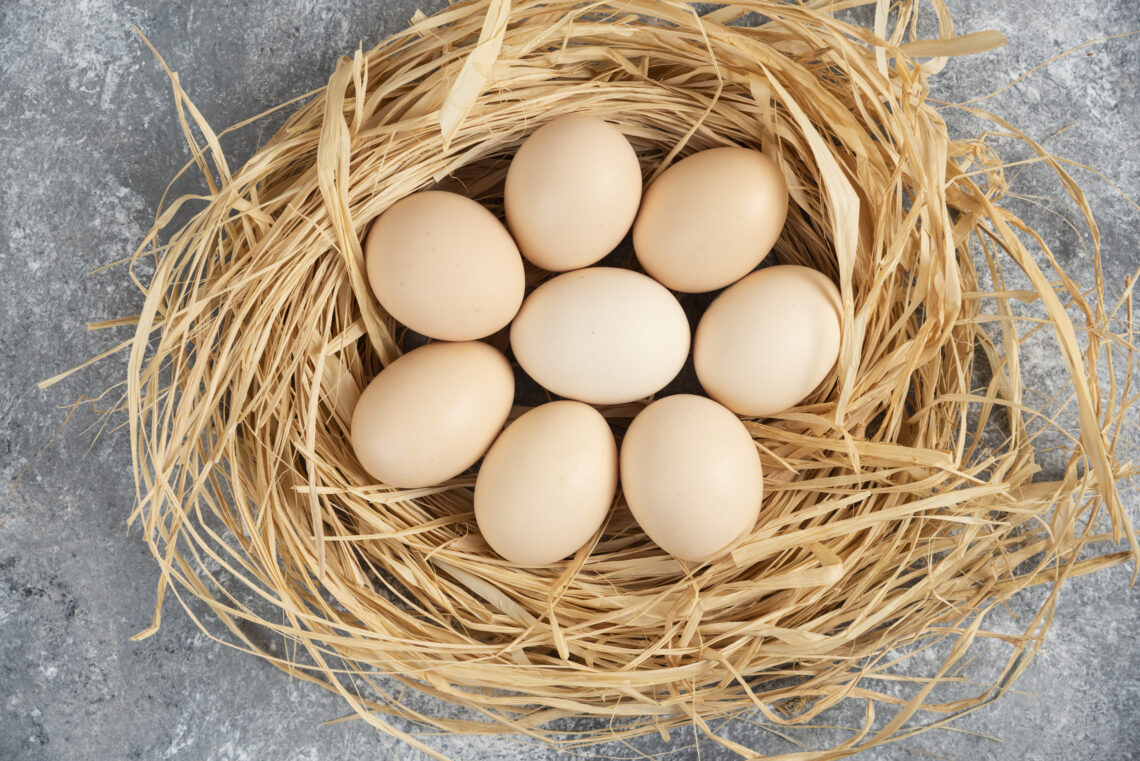
Why Birds Build Nests on Exterior Lamps
I don’t understand why birds keep building nests on top of my front door light so I googled this topic. It turns out that there is a science behind this behavior. Birds are instinctively drawn to light sources at night. This behavior is known as positive phototaxis. They use light to navigate, hunt for food, and even select a place to build their nests. Exterior lamps offer a convenient and safe place for birds to build their nests.
The phenomenon of nesting on exterior lamps
Birds are fascinating creatures that have always intrigued humans with their unique behaviors and habits. One such behavior that has captured the attention of many bird enthusiasts is the phenomenon of nesting on exterior lamps. It’s not uncommon to see birds building their nests on outdoor lighting fixtures, such as porch lights, streetlamps, and floodlights.
While this behavior may seem strange and even inconvenient for some homeowners, there is actually a scientific reason behind it. Birds are instinctively drawn to light sources because they associate them with warmth and safety. In the wild, birds would typically build their nests in areas that provide shelter and protection from predators. However, with the increasing presence of human habitation and lighting, birds have adapted to utilize these new opportunities for nesting sites.
Exterior lamps provide a stable and secure location for birds to build their nests. The warmth generated by the light can also help to incubate the eggs and keep the young birds warm. Additionally, the height of the lamp post can provide a vantage point for birds to monitor their surroundings and protect their young from potential predators.
While this behavior may be fascinating to observe, it’s important to remember to respect the birds’ nesting sites and not disturb their nests. By understanding the science behind this phenomenon, we can better appreciate the amazing adaptations that birds have made to coexist with human development.
The purpose of bird nests
Birds are known for their unique ability to build intricate nests, often with materials found in their surrounding environment. But, have you ever wondered why birds build their nests in the most unusual places, like on top of exterior lamps?
The primary purpose of bird nests is for shelter and protection. Nests provide a safe place for birds to rest, incubate their eggs, and raise their young. By building their nests on exterior lamps, birds are able to take advantage of the warmth that the lamp provides, especially during the cooler months of the year. The warmth from the lamp can help keep the eggs or young chicks at a comfortable temperature, ensuring their survival.
Another reason why birds build their nests on exterior lamps is for better visibility. By building their nests in high places, birds have a better vantage point to watch for predators, keeping their young safe from harm.
Interestingly, birds also have an innate desire to build their nests in new locations each year. This prevents the build-up of parasites and predators that may have infested the previous year’s nest. Building their nests on exterior lamps provides a new and safe location for birds to build their nests each year.
In conclusion, the purpose of bird nests is to provide shelter and protection for their young. Building their nests on exterior lamps allows birds to take advantage of the warmth, better visibility, and the opportunity to build in new locations each year.
The benefits of building nests on exterior lamp
Birds have been building nests on exterior lamps for centuries, and there is a good reason why. Building nests on exterior lamps offer several benefits to birds. Firstly, the warmth generated by the lamp helps to incubate the eggs, which is particularly important in colder climates. The heat from the lamp can also help to keep the chicks warm, helping them to develop and grow faster.
Secondly, building nests on exterior lamps provides birds with a safe and secure place to raise their young. The height of the lamp means that predators such as cats and other birds are less likely to be able to reach the nest, protecting the chicks from danger.
In addition to these benefits, building nests on exterior lamps can also help birds to save energy. Instead of building a separate nest, birds can utilize the warmth provided by the lamp to keep their eggs warm, reducing the amount of energy they need to expend to keep their offspring safe and healthy.
Overall, there are many benefits to building nests on exterior lamps, making it a popular choice for birds looking to start a family. As humans, we can also benefit from this natural phenomenon by observing and enjoying the beauty of these nests and the birds that inhabit them.
The science behind the attraction to exterior lamps
Birds are attracted to exterior lamps for a variety of reasons, mostly related to the way they perceive light. Many species of birds use visual cues to find suitable nesting sites, and exterior lamps can provide an ideal location that meets their needs.
One factor is that birds are naturally drawn to the brightness and warmth of exterior lamps. This can be especially true during the nesting season when birds are looking for a cozy and secure place to build their nests. The warmth of the lamps can create a comfortable environment for the birds, and the light can help them navigate and find food during the night.
Another reason why birds are attracted to exterior lamps is that they provide a high vantage point. Birds, especially those that nest in trees, are always on the lookout for potential predators. By perching on top of an exterior lamp, they can have a clear view of their surroundings and keep an eye out for any threats.
Additionally, exterior lamps can make it easier for birds to find and capture insects, which can be an important food source, especially during the breeding season. The light from the lamps attracts insects, which in turn attracts birds.
In conclusion, there are several reasons why birds are attracted to exterior lamps, including the warmth, light, and high vantage point they provide. By understanding the science behind this behavior, we can better appreciate the beauty of nature and the fascinating ways in which birds adapt to their surroundings.
The role of light in nesting behavior
Light plays a crucial role in the nesting behavior of birds. It’s been observed that birds tend to build their nests on exterior lamps, especially those that are left on throughout the night. This is because birds are naturally attracted to light, and they use it as a cue for various activities, including building their nests.
Studies have shown that birds have an internal clock, also known as the circadian rhythm, which regulates their activities based on the amount and type of light they are exposed to. When birds are exposed to light at night, it can disrupt their circadian rhythm, leading to changes in their behavior.
Birds that build their nests on exterior lamps are taking advantage of this behavior. The light from the lamp acts as a signal for the birds to start building their nests. Additionally, the warmth generated by the lamp can also provide a comfortable environment for the birds to lay and incubate their eggs.
It’s interesting to note that not all birds are attracted to light in the same way. Some species, such as the common blackbird, prefer to nest in darker areas, while others, such as the house sparrow, are attracted to bright lights. This suggests that there may be a genetic component to the nesting behavior of birds.
Overall, the role of light in nesting behavior is a fascinating area of study and understanding it can help us to better appreciate the incredible adaptability and intelligence of these creatures.
The impact of human behavior and artificial light on nesting habits
The impact of human behavior and artificial light on nesting habits is an important factor to consider when studying why birds build nests on exterior lamps. Artificial light at night can disrupt the natural patterns of birds by causing them to become disoriented and confused. This can lead to birds building nests in unusual places such as exterior lamps.
In addition, human behavior can also play a role in the nesting habits of birds. As more and more land is developed for human use, birds are forced to adapt to new environments. This can lead to them building nests in unusual locations such as on exterior lamps or other man-made structures.
Despite the potential negative effects of human behavior and artificial light on nesting habits, some species of birds have adapted to these changes and have even begun to thrive in urban environments. For example, the common pigeon is a bird that has adapted well to urban environments and can often be seen nesting on top of buildings and other man-made structures.
Overall, it is important to consider the impact of human behavior and artificial light on nesting habits when studying why birds build nests on exterior lamps. By understanding these factors, we can better understand how to protect and support bird populations in urban environments.
How birds adapt to changing environments
Birds are incredibly adaptive creatures that can quickly change their habits, behaviors, and even physical characteristics in response to changes in their environments. This includes building nests on exterior lamps.
In urban and suburban environments, birds have adapted to the abundance of lights by building their nests on or near them. This is because these areas provide a relatively safe place to build a nest that is sheltered from predators such as cats and raccoons. The warmth generated by the lamp can also help incubate eggs and keep chicks warm during the early stages of development.
Birds have also adapted to the changing seasons by adjusting the location and structure of their nests. For example, some birds will build their nests in trees during the summer months when there is an abundance of food and shelter. However, they may move to more protected areas during the winter months when resources are scarce and the weather is harsh.
Overall, the ability of birds to adapt to changing environments is a testament to their resilience and ingenuity. By observing their behaviors and studying their habits, we can gain a better understanding of the natural world and the complex ways in which different species interact with each other and their surroundings.
Important considerations for homeowners
If you’re a homeowner and have noticed birds building nests on your exterior lamps, there are a few important considerations to keep in mind. Firstly, it’s important to note that many species of birds, such as swallows and house finches, are protected by law and it’s illegal to move their nests or disturb their eggs or young chicks. So, if you notice a nest on your lamp, it’s important to leave it undisturbed until the birds have left on their own.
Secondly, it’s important to keep the area around the nest clean and free of debris. This not only helps to prevent any potential fire hazards from nesting materials getting too close to the lamp’s bulb, but it also helps to keep the area clean and tidy.
Another consideration is the amount of light shining on the nest. Birds are sensitive to light and too much exposure can cause stress and harm to their chicks. Consider installing a lamp with a lower wattage bulb or shading the area around the nest with a piece of cloth or other material to reduce the amount of light shining on the nest.
Finally, it’s important to remember that birds are an important part of our ecosystem and they provide a valuable service by controlling insect populations and pollinating plants. So, even though it may be an inconvenience to have a nest on your lamp, it’s important to respect and protect these important creatures.
Tips for protecting birds while using exterior lighting
While exterior lighting can be a great addition to any property, it’s important to keep in mind the impact it can have on birds that may choose to build their nests on them. Here are some tips for protecting birds while still using exterior lighting:
1. Choose the right type of lighting: Birds are attracted to warm, white lights, so choosing a cooler, blue light can be less attractive to them.
2. Install lights out of reach: If possible, install lights in a location that is out of reach of birds.
3. Use motion sensors: Motion sensors can be a great way to reduce the amount of time exterior lights are on, which can reduce the chance of birds building nests on them.
4. Install barriers: If you know that birds are building nests on your exterior lighting, consider installing barriers such as netting or mesh to prevent them from accessing the area.
5. Schedule maintenance carefully: If you need to perform maintenance on your exterior lighting, be sure to do it outside of bird nesting season to avoid disrupting their habitat.
By following these tips, you can help protect birds while still enjoying the benefits of exterior lighting on your property.
Summary and future research directions.In conclusion, the reasons behind why birds build nests on exterior lamps are not fully understood, but there are several potential factors that may contribute to this behavior. These include the warmth provided by the bulb, the protection from predators, and the elevated location of the lamp.
While some research has been conducted on this topic, there is still much to be learned about the nesting behaviors of birds. Future research could explore the specific factors that attract birds to exterior lamps, as well as the potential negative impacts of this behavior on both the birds and the lamps themselves.
Additionally, understanding the nesting behaviors of birds can have broader implications for conservation efforts and urban planning. By providing suitable nesting habitats for birds, we can help to promote biodiversity and support healthy ecosystems in our cities and towns.



